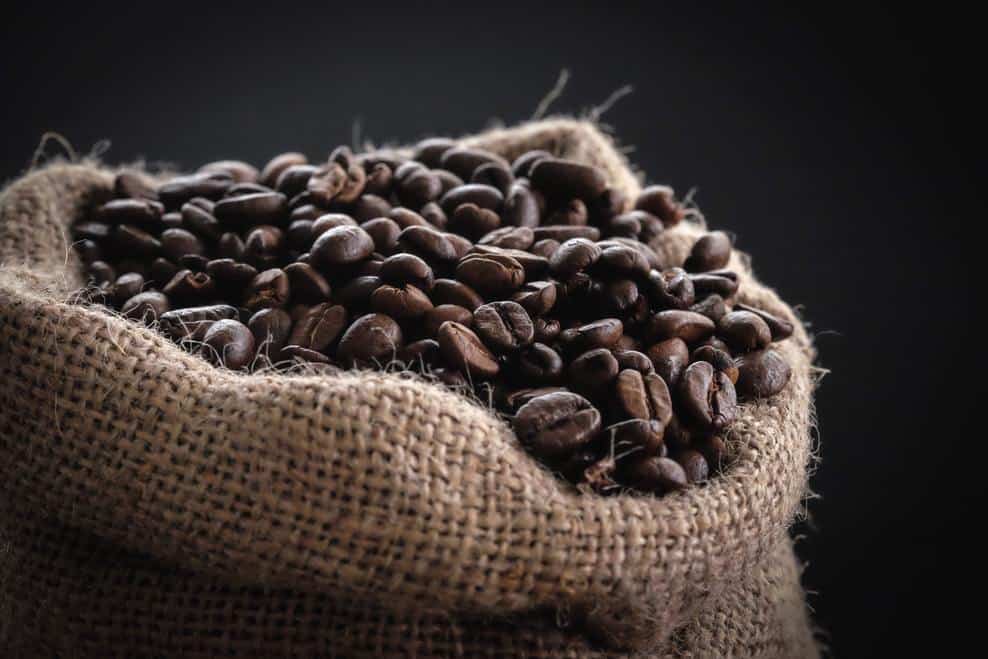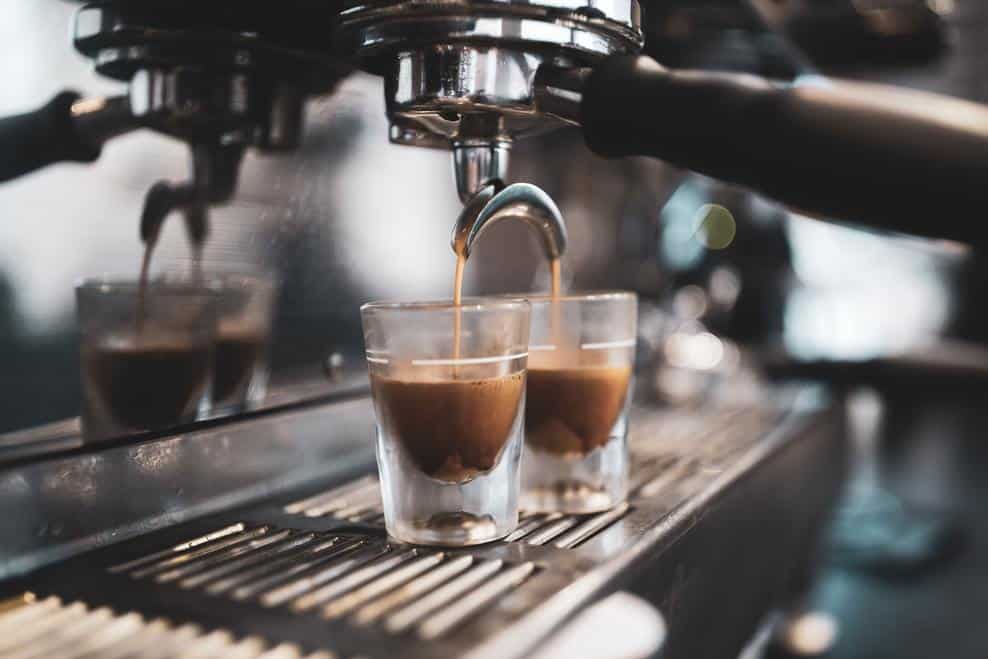Short Explanation: The main difference between coffee and espresso is the way they’re prepared.
Coffee is enjoyed by more than 80% of the adult population in the United States as if it’s the fuel that keeps the country going.
Coffee is very adaptable and can be prepared in a number of ways and one popular form of coffee is espresso.
Espresso is said to have originated in Italy between the late 1800s and the early 1900s. The term espresso is from the Latin word “esprimere“, which means “to express” or “to press forth.“
Espresso was invented to help cut down on brewing time, as a typical cup of coffee may take several minutes to prepare.
However, in terms of equipment, maintenance, and the number of beans consumed, espresso is much more expensive.
So, what’s the big deal with expresso? Is it better than coffee?
That you’re about to find out! So, read on.
What is the Difference Between Coffee and Espresso?
Coffee and espresso are not exactly two different kinds of drinks because the latter is a type of coffee beverage that has a different brewing technique from ordinary coffee.
High water pressure and finely ground beans are used in the brewing process to create a small, concentrated shot. This is why it is referred to as espresso ‘shots‘.
Aside from its concentrated and syrup-based taste, one of the distinguishing features of the espresso is its top layer of foam known as the crema.
Because of its greater caffeine content, espresso may be combined with milk or other ingredients to produce a variety of espresso-based beverages such as macchiato, cortado, cappuccino, latte, flat white, marocchino, and americano.
Espresso grinds are generally finer than other varieties of coffee grinds due to the fact that the process of producing espresso involves the flow of hot water over densely packed grounds.
Some consider espresso to be the “purest” form of coffee.
Espresso beans are roasted until they are very dark in order to enhance their ability to resist the high pressures used in brewing.
A dark roast produces a substantial shot with mild acidity.
But, in terms of caffeine concentration, how does espresso differ from ordinary coffee?
Is Espresso Stronger Than Coffee?
Well, the answer depends on how much of each beverage you consume.
Espresso is definitely higher in caffeine concentration.
Allow me to explain.
According to USDA‘s nutrition statistics, one ounce of espresso contains 63 mg of caffeine. On the other hand, regular coffee has 12 to 16 mg of caffeine per ounce by estimation.
That said, espresso holds the crown in terms of caffeine content!
To be safe from caffeine-related symptoms, I strongly suggest keeping in mind the recommended caffeine intake which is 400 mg per day for most healthy adults.
Which is Healthier, Coffee or Espresso?
Espresso is widely considered to be healthier.
Espresso is considered healthier than drip coffee since it does not require the use of a coffee filter. The espresso-making method allows natural oils and minerals to seep into the coffee, which provides numerous health benefits.
Regular coffee is frequently loaded with sugars and creams, but espresso is consumed as is. Therefore, you can get that caffeine boost from espresso without jeopardizing your health in the long term.
It’s worth mentioning that espresso is unfiltered, and it may elevate your blood cholesterol levels if consumed excessively.
Also, consuming too much caffeine can damage your stomach lining in the long run.
Although neither coffee nor espresso is likely to cause severe health problems if taken in moderation, people may favor espresso over coffee.
Is Espresso Bad for You?
No, espresso, like black coffee, offers far more beneficial effects than downsides. Espresso, at its most basic level, is strong in antioxidants and low in calories, both of which have clear medical benefits.
Espresso has been found in studies to boost long-term memory, focus, and mood, as well as lowers the risk of stroke and type 2 diabetes.
Additionally, some people drink espresso to enhance their workout performance. So, it’s safe to assume that this drink isn’t harmful to your health.
Espresso is also known for having a low acidity level. This is due to the decomposition of chlorogenic acids in coffee beans as they are roasted longer.
As a result, any dark roasted coffee bean, such as the one used for espresso, will have less acidity than a light or medium roast.
Still, drink your espresso in moderation to avoid caffeine overdose and stomach problems.
Does Espresso Taste Better Than Coffee?
Taste is naturally subjective. Whether you like the taste of espresso or coffee more usually depends on how strong you prefer your coffee.
Some espresso connoisseurs believe that the paper filter used in normal drip coffee brewing prevents some of the flavors from the coffee grounds to get into the coffee, resulting in a noticeable difference in taste.
A shot of espresso will taste entirely different from a French press brew, even if you start with the same exact coffee beans because the ratio of flavor components are different.
When coffee grinds come into contact with water, the flavor compounds within them begin to leak out.
The ratio of taste components produced by espresso extraction is more intense resulting in a more powerful and concentrated taste.
It also depends on how the two beverages are consumed.
Coffee drinks can be made in a variety of ways depending on your preferences with the use of sweeteners, and creamers.
Click here to see my top recommendation for the best coffee sweeteners.
Are Espresso Beans and Coffee Beans the Same?

Yes, they are the same beans.
The most common types of coffee beans are robusta and arabica and most coffee beverages, including espresso, is made from those beans.
The espresso bean is just a coffee bean that has been roasted longer, ground finer, and brewed differently.
Espresso beans are roasted for a longer time and at a higher temperature than light or medium roasts, resulting in caramelization and a sweeter flavor.
Long, dark roasting removes much of the acidity, but it also extracts oils from the bean, resulting in a richer, more full-bodied concentrate.
The coffee is ground finely in order to fit into the portafilter. If the beans aren’t firmly packed, the water takes a shortcut through the grinds, resulting in a watered-down version that tastes more like a typical cup of coffee.
It may be difficult to get that right consistency and finer ground for espresso beans at home, which is why stores sell espresso beans, but it is possible to make them yourself.
Can You Make Espresso With Regular Coffee?
As explained earlier, any bean may be used to produce good espresso. And yes, you can brew wonderful espresso using regular coffee beans.
Finer ground coffee beans should be used, and the beans should be roasted enough to create crema.
Crema is the top foamy layer on espresso made up of CO2 microbubbles, which form when hot water meets freshly ground coffee during the brewing process.
Crema gives the espresso shot a richer flavor. The espresso tastes like extremely strong black coffee without the crema. So it is important to get it right.
If you’d like to try making espresso at home, check out the video below.
To Sum It All Up
Espresso is nothing more than a type of coffee.
Coffee and espresso are both manufactured from coffee beans, so they have a lot in common. The grind of the bean and the brewing processes distinguish espresso from drip coffee.
Simply told, espresso is a little concentrated volume of coffee that has been extracted under high pressure.
Coffee and espresso include many components, such as calories and caffeine. Which of the two is better depends on individual suitability and preferences.
A warm cup of drip coffee is just as pleasant as a richly flavored espresso shot.
Both beverages have distinct flavors to offer.
Coffee is a lighter beverage that may be taken by the cup, whereas espresso is an excellent choice for a rapid caffeine shot with a lot of taste.
So, if you’ve had enough of your normal coffee, go out to try some of your local espresso options and taste a new rich experience of coffee.
Good luck and enjoy your cup of coffee or espresso!
Other Articles
- Click here to see this post’s visual story
- Healthiest Coffees For You (Top Picks)
- How To Make A Strong Coffee (A Detailed Guide)
- What Country Has The Best Coffee? (Surprising!)
Contents
- 1 What is the Difference Between Coffee and Espresso?
- 2 Is Espresso Stronger Than Coffee?
- 3 Which is Healthier, Coffee or Espresso?
- 4 Is Espresso Bad for You?
- 5 Does Espresso Taste Better Than Coffee?
- 6 Are Espresso Beans and Coffee Beans the Same?
- 7 Can You Make Espresso With Regular Coffee?
- 8 To Sum It All Up
- 9 Other Articles

